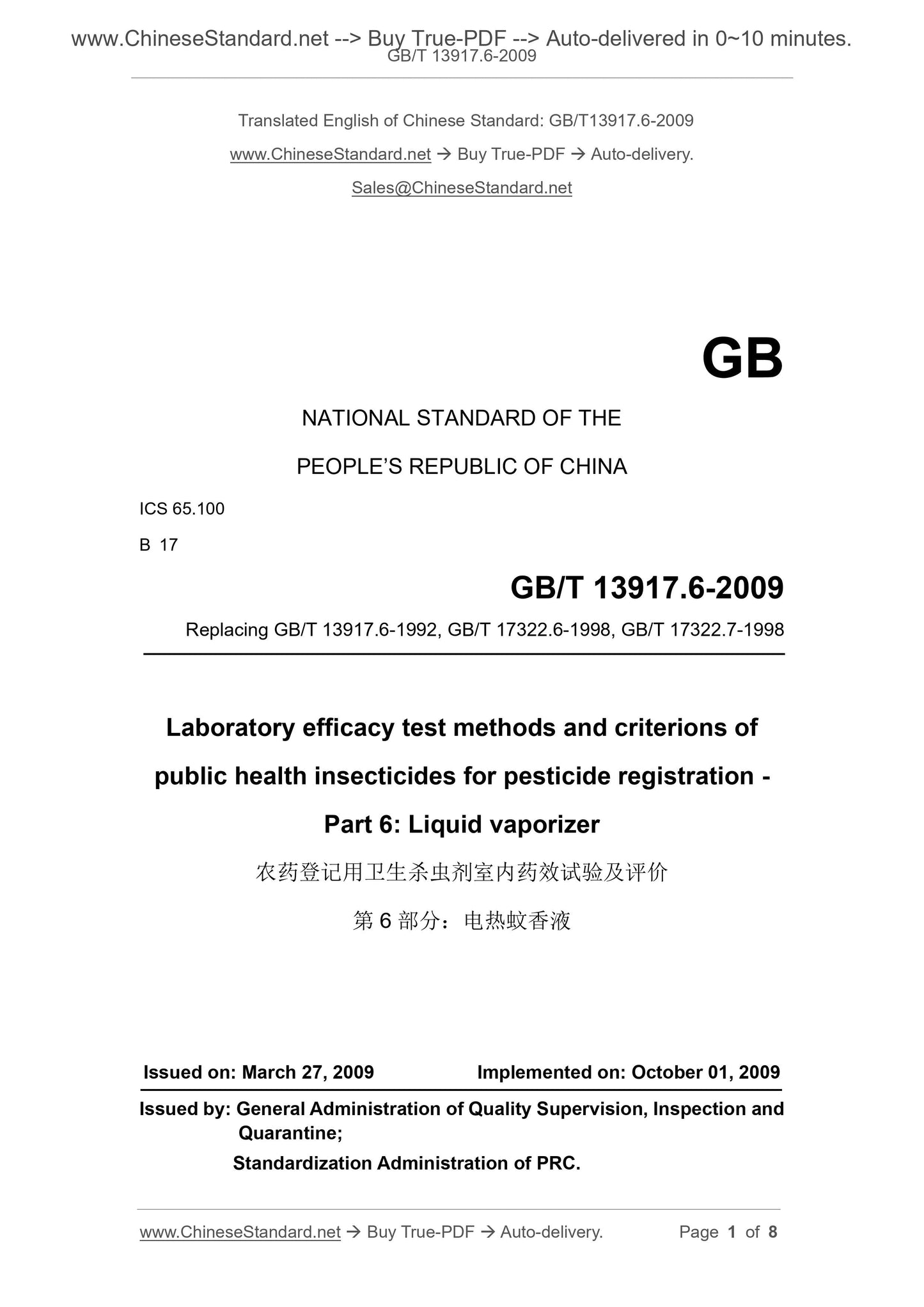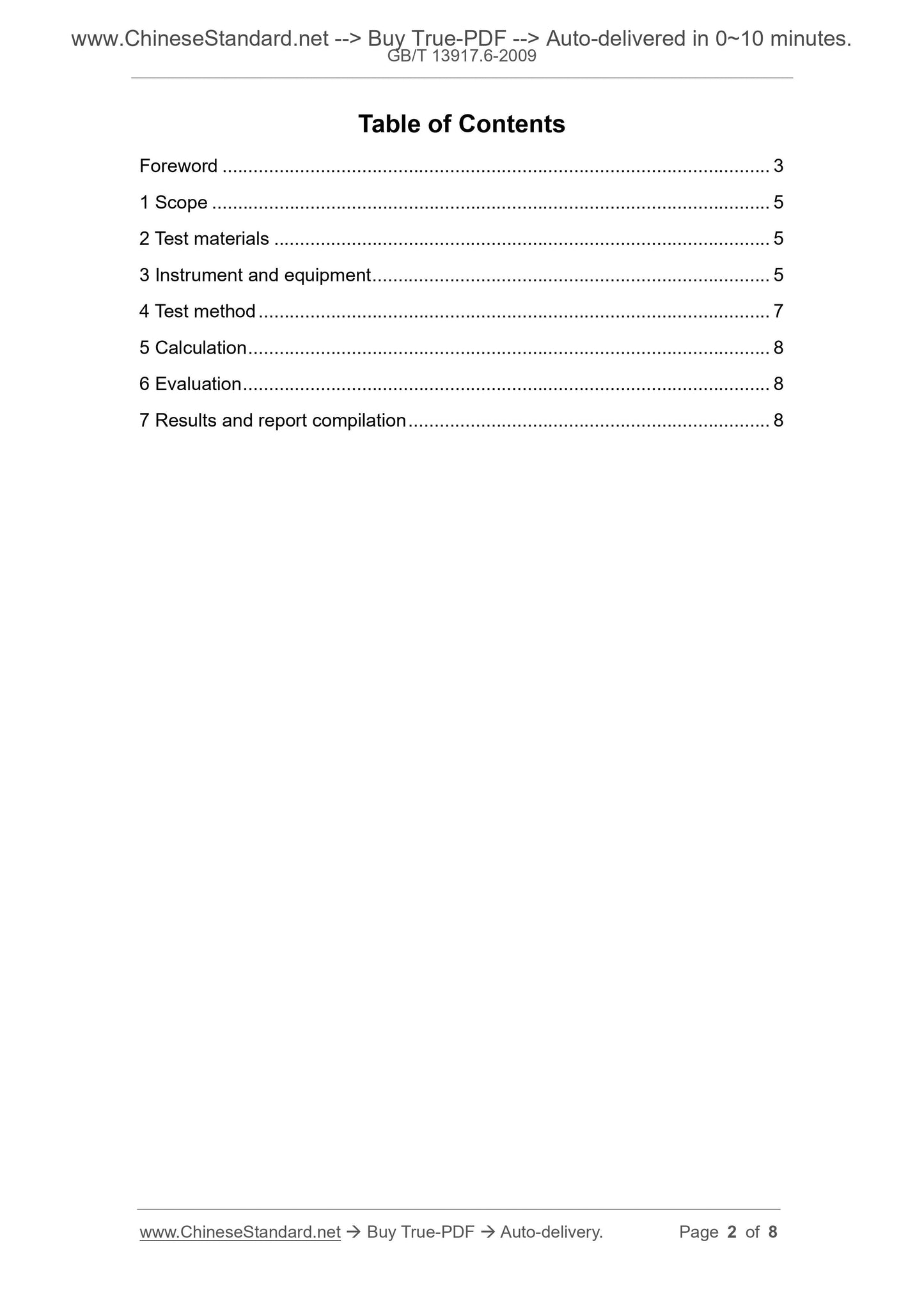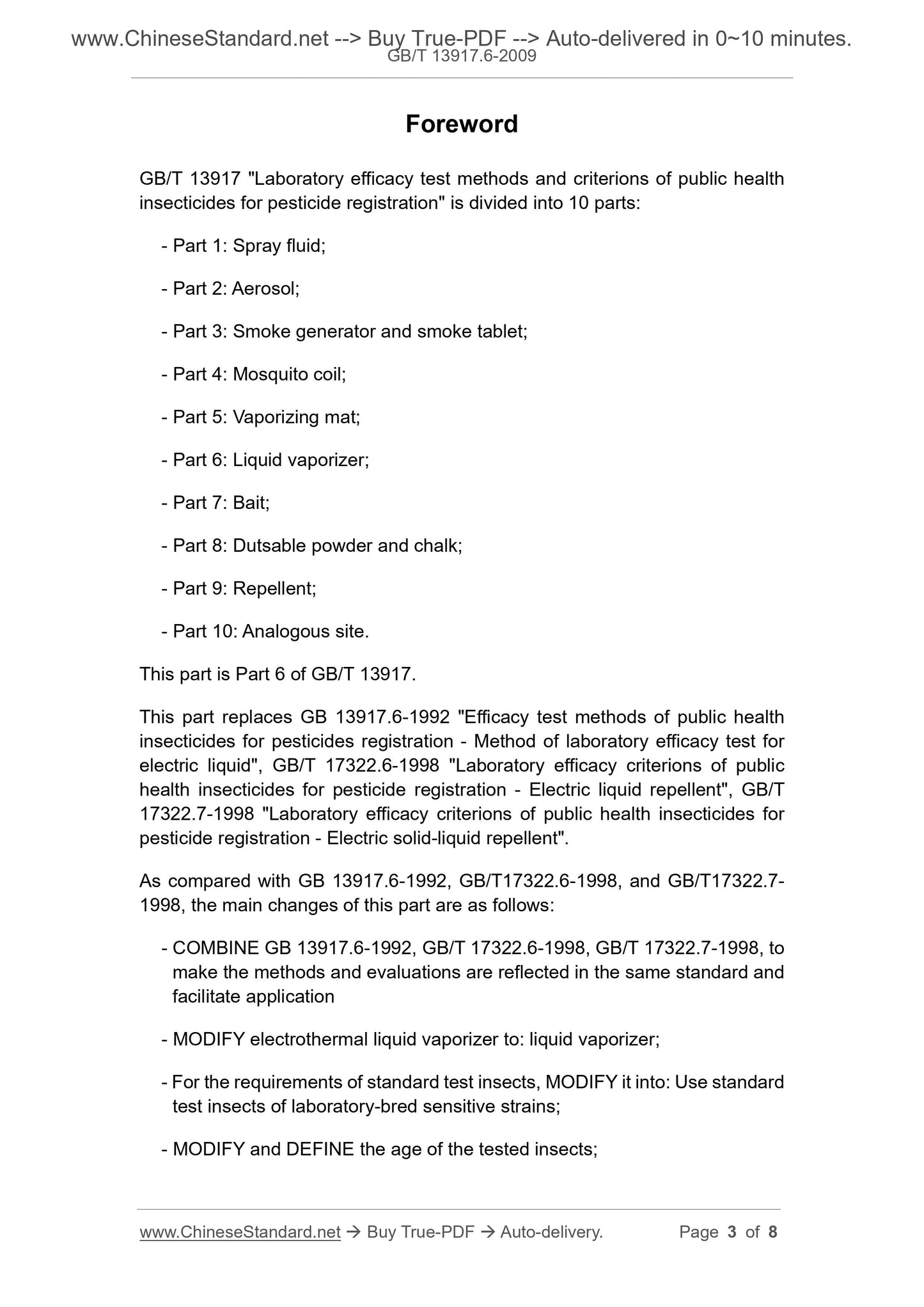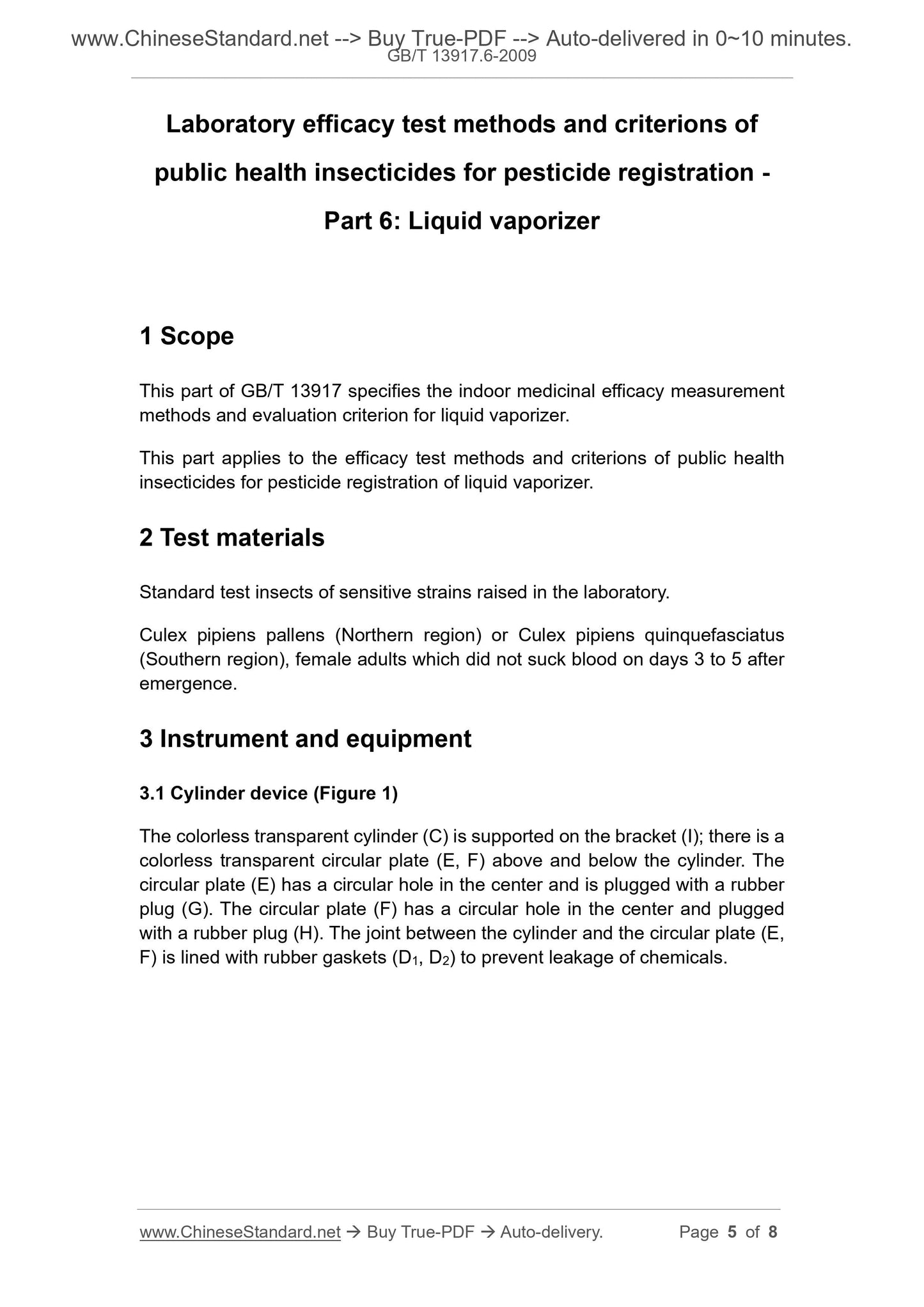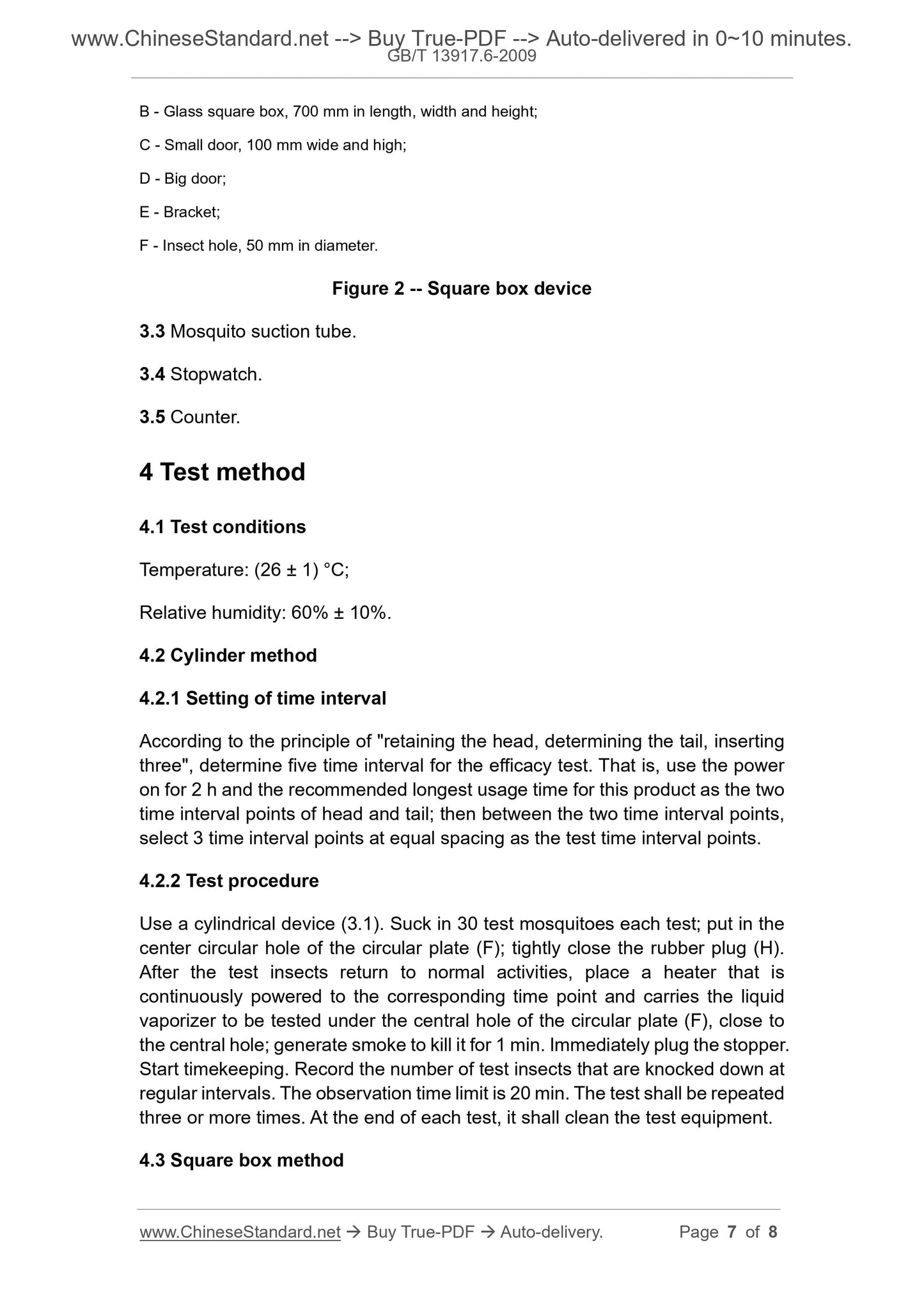1
/
of
5
www.ChineseStandard.us -- Field Test Asia Pte. Ltd.
GB/T 13917.6-2009 English PDF (GB/T13917.6-2009)
GB/T 13917.6-2009 English PDF (GB/T13917.6-2009)
Regular price
$100.00
Regular price
Sale price
$100.00
Unit price
/
per
Shipping calculated at checkout.
Couldn't load pickup availability
GB/T 13917.6-2009: Laboratory efficacy test methods and criterions of public health insecticides for pesticide registration -- Part 6: Liquid vaporizer
Delivery: 9 seconds. Download (and Email) true-PDF + Invoice.Get Quotation: Click GB/T 13917.6-2009 (Self-service in 1-minute)
Newer / historical versions: GB/T 13917.6-2009
Preview True-PDF
Scope
This part of GB/T 13917 specifies the indoor medicinal efficacy measurementmethods and evaluation criterion for liquid vaporizer.
This part applies to the efficacy test methods and criterions of public health
insecticides for pesticide registration of liquid vaporizer.
Basic Data
| Standard ID | GB/T 13917.6-2009 (GB/T13917.6-2009) |
| Description (Translated English) | Laboratory efficacy test methods and criterions of public health insecticides for pesticide registration -- Part 6: Liquid vaporizer |
| Sector / Industry | National Standard (Recommended) |
| Classification of Chinese Standard | B17 |
| Classification of International Standard | 65.100 |
| Word Count Estimation | 6,626 |
| Date of Issue | 2009-03-27 |
| Date of Implementation | 2009-10-01 |
| Older Standard (superseded by this standard) | GB 13917.6-1992; GB/T 17322.6-1998; GB/T 17322.7-1998 |
| Regulation (derived from) | National Standard Approval Announcement 2009 No.4 (Total No.144) |
| Issuing agency(ies) | General Administration of Quality Supervision, Inspection and Quarantine of the People's Republic of China, Standardization Administration of the People's Republic of China |
| Summary | This standard specifies the Efficacy test methods and evaluation criteria electric mosquito liquid. This section applies to electric mosquito liquid at the time of registration of pesticides to kill mosquitoes carry smoked and evaluation of treatment efficacy was measured. |
Share
